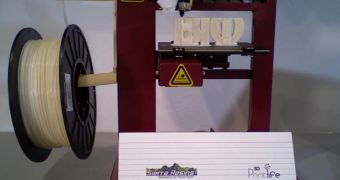Plastic has been a major pollutant since it was invented, not necessarily because it's toxic, but because it can't decompose, or decomposes very, very slowly, something bad when, say, a mound of water bottles are littered across a forest trail. 3D printing experts are trying to ensure that 3D printing doesn't make this worse.
Since plastic is one of the most malleable substances known to man, it was obvious that it would be used in 3D printing before anything else.
Sure, resin and other such compounds are employed, but for printers that build things out of filament (ergo, the majority of consumer and service models), plastic is the order of the day.
It can be a monochrome filament, a multi-color material, a thick or thin wire, etc. In the end, it's still plastic, which means that 3D printing isn't exactly green, no matter how you look at it.
Now, at least, it's not as bad as a few years ago, when prints failed more often than not and resulted in a lot of junk.
Planned recycling helped mitigate the issue, mostly, but 3D PrintLife, an online US filament and 3D printer retailer, has signed a partnership with Sierra Resins because they want to make 3D printed objects biodegradable.
The answer lies in bioplastics, plastics that easily recycle and break down in landfill environments, like paper and most everything else decomposes after prolonged exposure to the elements of nature, or just from being buried in the earth.
Sierra Resins is a maker of such bioplastics, hence why 3D PrintLife called upon its expertise. The goal is to make a filament that performs like any other high-quality plastic but without the environmental unfriendliness.
The video below shows a spool of bioplastic. As you can see, it looks and acts like normal plastic would, although the color is a bit on the washed up side.
That shouldn't matter much, though, because 3D printed objects usually ended up painted anyway. Unless it's a multi-hued filament that makes the printed items come out in color from the get-go, which is not the case here.
That does raise an interesting question though: is it possible to make a full-color biodegradable plastic filament? And if so, how long will it take for something of the sort to be released? 3D PrintLife and Sierra Resins have a good thing going here, since they don't have a competition in bioplastic filaments as far as I know, so they could carve a strong position for themselves if they play their cards right, so they at least have incentive to work on a color bioplastic, if nothing else.

 14 DAY TRIAL //
14 DAY TRIAL //